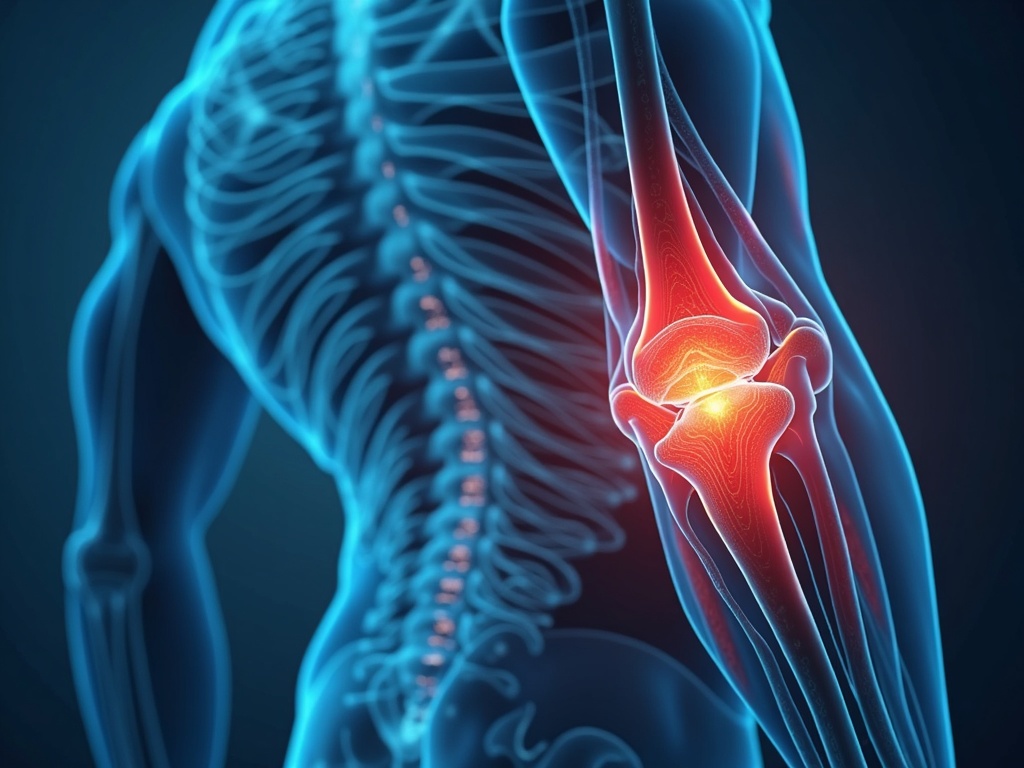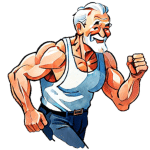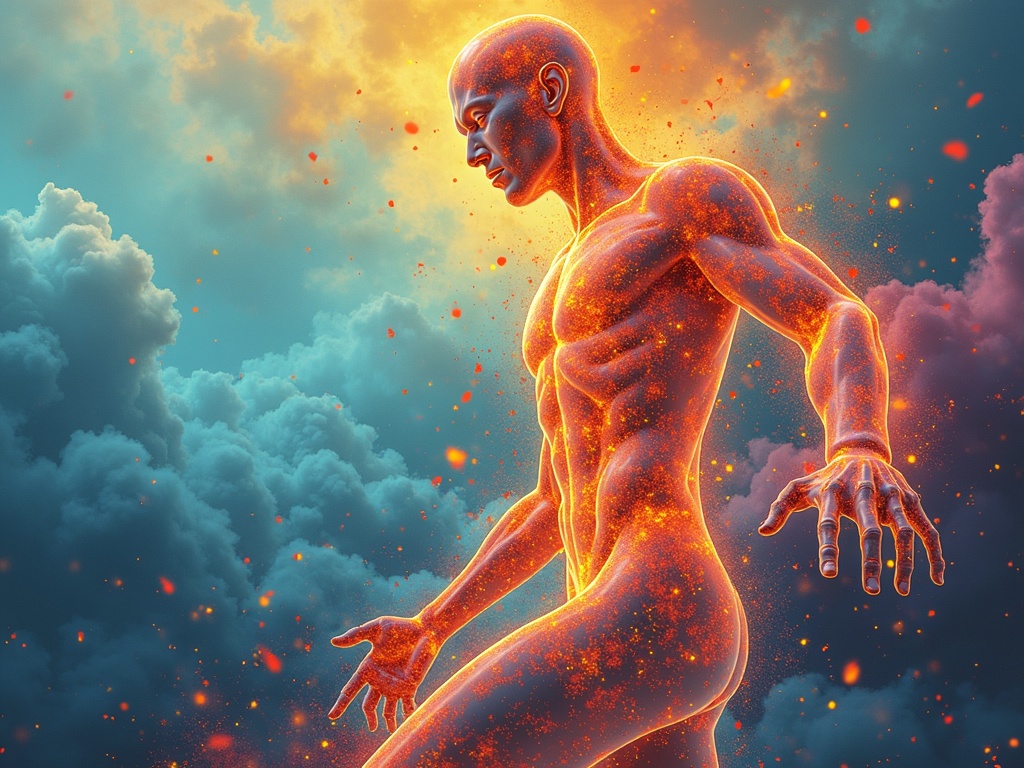Acupuncture for Joint Pain Relief: A Man's Guide to Reclaiming Movement
That nagging ache in your knee after a round of golf? The stiffness in your shoulders that makes reaching for the top shelf a daily trial? As men, we often push through physical discomfort, attributing it to ‘getting older' or ‘overdoing it’ at the gym. But chronic joint pain doesn't have to be a life sentence. While popping pills might seem like the easy answer, more and more men are discovering the potent, natural relief offered by acupuncture. This ancient practice could be the key to unlocking lasting joint pain relief and getting back to the activities you love.
Understanding Joint Pain in Men: More Than Just Wear and Tear
Before diving into acupuncture, let’s understand why joint pain is a significant issue for men. While wear and tear certainly plays a role, the causes can be complex and multifaceted:
- Osteoarthritis: This degenerative joint disease affects millions, particularly as we age. Cartilage, the cushion between bones, breaks down, leading to pain, stiffness, and reduced range of motion.
- Rheumatoid Arthritis: An autoimmune disease where the body attacks its own joint tissues, causing inflammation, pain, and potential joint damage. While often associated with women, men are also susceptible.
- Injuries: Past sports injuries, car accidents, or even repetitive strain from work can lead to chronic joint pain. Men, often engaging in more physically demanding activities, are at a higher risk.
- Gout: A form of arthritis caused by a buildup of uric acid crystals in the joints, most commonly affecting the big toe but potentially impacting other joints. Men are more prone to gout than women.
- Bursitis and Tendinitis: Inflammation of the bursae (fluid-filled sacs cushioning joints) or tendons (connecting muscle to bone), often due to overuse or repetitive motions.
Ignoring joint pain isn't a badge of honor; it's a recipe for further damage and decreased quality of life. Fortunately, acupuncture provides a unique approach to addressing the underlying causes of this pain.
Acupuncture: An Ancient Solution for Modern Aches
Acupuncture, a cornerstone of Traditional Chinese Medicine (TCM), involves inserting thin, sterile needles into specific points on the body. These points, located along meridians (energy pathways), are believed to regulate the flow of Qi (vital energy). When Qi is blocked or imbalanced, pain and illness can result.
But how does this translate to joint pain relief? The scientific understanding is still evolving, but research suggests that acupuncture works through several mechanisms:
- Pain Gate Theory: Acupuncture stimulates nerve fibers that send signals to the brain, effectively closing the gate on pain signals coming from the affected joint.
- Endorphin Release: Acupuncture triggers the release of endorphins, the body's natural painkillers. This can provide immediate and lasting pain relief.
- Reduced Inflammation: Studies show acupuncture can decrease the production of inflammatory chemicals in the body, addressing a root cause of many types of joint pain.
- Improved Circulation: By stimulating specific points, acupuncture can improve blood flow to the affected joint, promoting healing and reducing stiffness.
What to Expect During an Acupuncture Session
If you're considering acupuncture for joint pain, knowing what to expect can ease any apprehension. Here's a breakdown of a typical session:
- Consultation: The acupuncturist will begin with a thorough consultation, discussing your medical history, lifestyle, and the specifics of your joint pain. They'll examine the affected area and may perform other TCM diagnostic techniques like pulse and tongue diagnosis.
- Treatment Plan: Based on the consultation, the acupuncturist will develop a personalized treatment plan, outlining the specific acupuncture points they'll target.
- Needle Insertion: You'll lie down comfortably, and the acupuncturist will gently insert thin, sterile needles into the selected points. The sensation is often described as a mild tingle or pressure, but it shouldn't be painful.
- Rest and Relaxation: The needles will remain in place for 20-30 minutes while you relax. Many people find this to be a deeply calming experience.
- Needle Removal: The acupuncturist will carefully remove the needles. Some minor bleeding or bruising is possible but rare.
Most people require a series of treatments to experience significant and lasting relief. The number of sessions will vary depending on the severity and chronicity of your joint pain.
The Benefits of Acupuncture for Men's Joint Pain
Acupuncture offers several advantages over conventional pain management strategies, making it an appealing option for men seeking long-term relief:
- Natural Pain Relief: Acupuncture works with your body's natural healing mechanisms, avoiding the side effects associated with many pain medications.
- Addresses the Root Cause: Unlike medications that simply mask the pain, acupuncture aims to address the underlying imbalances contributing to your joint problems.
- Improved Functionality: Beyond pain relief, acupuncture can improve joint mobility and range of motion, allowing you to return to your favorite activities.
- Reduced Reliance on Medication: Many men find they can reduce or even eliminate their reliance on pain medications after a course of acupuncture.
- Holistic Approach: Acupuncture considers the whole person, addressing not only the physical pain but also the emotional and mental factors that can contribute to chronic pain.

Combining Acupuncture with Other Therapies
Acupuncture can be even more effective when combined with other therapies. Consider these complementary approaches:
- Physical Therapy: Strengthening exercises and stretches can help support and stabilize your joints, reducing pain and improving function.
- Massage Therapy: Massage can help relax muscles, improve circulation, and reduce inflammation, complementing the effects of acupuncture.
- Dietary Changes: An anti-inflammatory diet rich in fruits, vegetables, and omega-3 fatty acids can help reduce joint pain and inflammation.
- Supplements: Certain supplements, such as glucosamine, chondroitin, and turmeric, may help support joint health. Consult with your doctor or a qualified healthcare professional before taking any supplements.
Finding a Qualified Acupuncturist
The effectiveness of acupuncture depends heavily on the skill and experience of the practitioner. When searching for an acupuncturist, consider the following:
- Licensing and Certification: Ensure the acupuncturist is licensed and certified in your state.
- Experience: Look for an acupuncturist with experience treating joint pain specifically.
- Credentials: Check if the acupuncturist has completed a recognized acupuncture program.
- Reviews and Testimonials: Read online reviews and testimonials to get a sense of other patients' experiences.
- Consultation: Schedule a consultation to discuss your condition and see if the acupuncturist is a good fit for you.
Acupuncture: A Path to Lasting Relief
Don't let joint pain dictate your life. Acupuncture offers a safe, effective, and natural way to reclaim your movement, reduce pain, and improve your overall well-being. By addressing the underlying causes of joint pain and working with your body's natural healing abilities, acupuncture can help you get back to the activities you enjoy and live a fuller, more active life. It's time to take control of your health and explore the potential of acupuncture for lasting joint pain relief.

